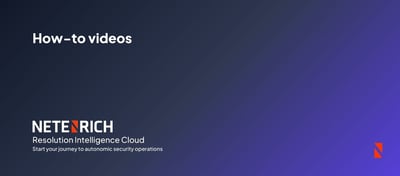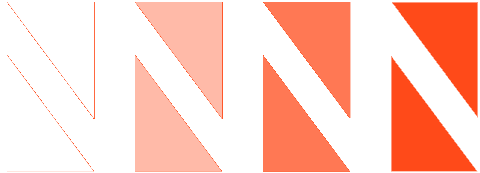The cost of inaction: Is IBM QRadar holding you back?
Traditional SIEMs like IBM QRadar often create more complexity than clarity. Here’s what’s standing in your way:
Scalability challenges:
IBM QRadar can struggle with large-scale deployments, resulting in escalating licensing fees, slow performance and limited flexibility as data volumes grow.
Missed security insights:
Limited AI and machine learning capabilities can lead to missed critical security insights, undetected threats and a reactive security posture.
Resource drain:
IBM QRadar’s complex query languages and ongoing maintenance requirements can drain valuable security resources while slowing down operations.
Rising costs, diminishing returns:
As threats grow more complex, QRadar’s siloed architecture and limited integrations fall short. Without a unified platform like Google Security Operations, teams face ballooning costs and fragmented visibility.
Proven Outcomes of Migrating from IBM QRadar to Google SecOps
Cost Savings
52%+ Reduction
Critical Alert Detection
99% Accuracy
Response Time
70% Faster
Manual Incidents Handling
>90% Reduction
Threat Detection Coverage
140% Improvement
Playbook Efficiency
90% Increase
Why Google Security Operations outpaces IBM QRadar
.png?width=64&height=64&name=Mask%20group%20(3).png)
Scales with Your Business
Cloud-native from the ground up, Google SecOps handles growing data volumes without the scaling or performance issues common with QRadar clusters.

Predictable, Lower Costs
No extra fees for ingest spikes. Flat pricing, less maintenance, and automated upgrades deliver long-term cost efficiency.
.png?width=64&height=64&name=Group%20873%20(1).png)
Smarter, Unified Threat Detection
Built-in AI, YARA-L rules, and threat intelligence eliminate blind spots, no stitching together third-party tools or writing complex rules.
.png?width=64&height=64&name=Group%20873%20(2).png)
Faster Search and Investigation
Sub-second search across petabytes of data gives analysts what QRadar can't: speed at scale, even during live incidents.
.png?width=64&height=64&name=Group%20873%20(3).png)
Less Maintenance, More Automation
Google SecOps reduces operational burden with automated workflows, simplified parser management, and no infrastructure upkeep.
Why Choose Netenrich for Your Migration from IBM QRadar to Google SecOps
Proven Expertise
Tap into Netenrich’s hands-on experience migrating enterprises from legacy SIEMs like QRadar to Google SecOps.
Custom-Tailored Planning
Every migration is grounded in a detailed assessment of your current QRadar architecture, rule sets, and data sources.
Zero Data Loss Assurance
Our methods ensure full preservation of log data, correlation logic, and security context throughout the migration.
Minimal Disruption
Staged and parallel approaches maintain operational continuity, no need to rip and replace overnight.
Knowledge Transfer That Sticks
We don’t just migrate, you get hands-on training and enablement to operationalize Google SecOps from day one.
Performance & Coverage Validation
We benchmark detection quality and search performance to ensure Google SecOps meets or exceeds what you had in QRadar.
Compliance Continuity Maintenance
We map legacy policies and workflows to Google SecOps to help you stay audit-ready across every step.
Ongoing Support & Optimization
Beyond migration, Netenrich provides continuous tuning, detection updates, and SecOps engineering to keep you ahead of evolving threats.
Netenrich Packages for IBM QRadar to SecOps Migration
.png?width=379&height=117&name=Group%20757%20(1).png)

SecOps Implement
IBM QRadar to Google SecOps
Streamline your QRadar Migration with Netenrich

Week 1-2
Pre-migration planning and environment assessment
.png?width=100&height=100&name=Group%20888%20(1).png)
Week 3-4
Data source integration and validation
.png?width=100&height=100&name=Group%20888%20(2).png)
Week 5-6
Search and rule migration
.png?width=100&height=100&name=Group%20888%20(3).png)
Week 7-8
Alerts, dashboards setup, and optimization
.png?width=100&height=100&name=Group%20888%20(5).png)
Week 9-10
Workflow migration and
automation
.png?width=100&height=100&name=Group%20888%20(4).png)
Week 11-12
Go live and production cutover
FAQs
-
What are the best QRadar alternatives for modern security operations?
The best QRadar alternatives include cloud-native platforms like Google Security Operations (SecOps). Unlike QRadar, Google SecOps offers built-in threat intelligence, AI-driven investigations, faster detection, and better scalability making it ideal for hybrid and cloud-first environments.
-
What are the pros and cons of IBM QRadar compared to Google Chronicle?
IBM QRadar is mature and feature-rich but too complex. It often requires significant tuning, infrastructure, and licensing overhead. Google Chronicle offers sub-second search, flat-rate pricing, native threat intel, and seamless integration with response tooling. Google SecOps excels in scale, speed, and automation, especially when operationalized with support from Netenrich.
-
Can we retain QRadar detection rules and tuning during the migration?
Yes. During migration, Netenrich maps QRadar rules and use cases to Google SecOps equivalents using YARA-L and custom detection logic. This helps preserve detection fidelity while modernizing and optimizing your rule set for a cloud-native architecture.
-
How is log normalization handled when migrating from QRadar to Google SecOps?
Log sources are reviewed and prioritized for ingestion. Custom and standard parsers are built or adapted to ensure consistent normalization, enrichment, and alignment with Google SecOps schemas, enabling better detection and faster investigation.
-
How does Netenrich ensure data integrity and SOC continuity during QRadar migration?
We follow a staged migration approach with secure data handling, parser validation, and continuity planning. This ensures no data loss, minimal disruption to SOC workflows, and full operational handover with training, documentation, and post-migration support.



.webp)



